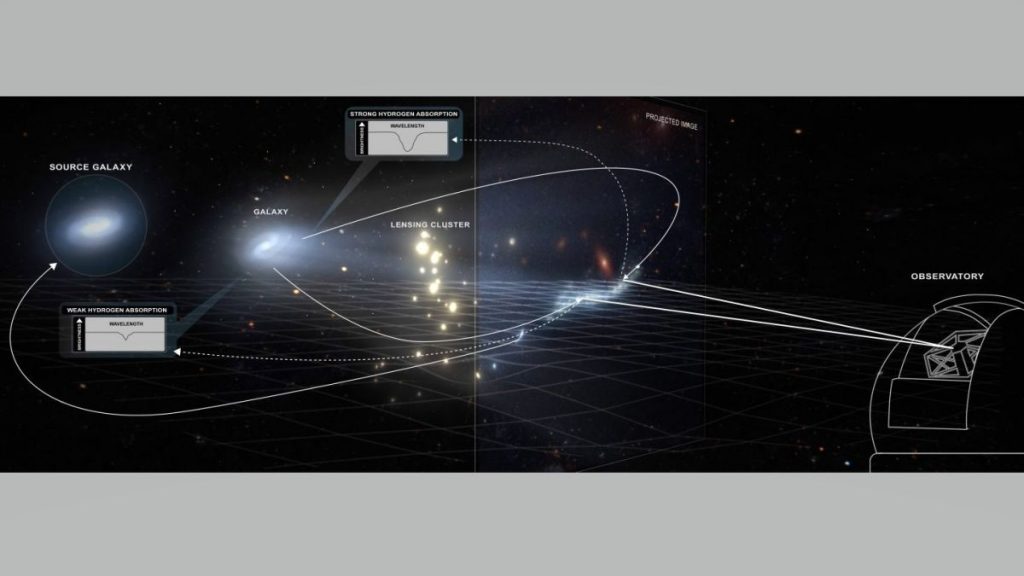For the first time, researchers have mapped elusive gas clouds that are believed to hold clues about galactic evolution and star formation in the early days of the universe.
Using the W. M. Keck Observatory at Mauna Kea in Hawaii, researchers measured the size, mass and density of ancient neutral hydrogen clouds. These massive, translucent gas clouds, also known as damped Lyman-α systems (DLAs), are estimated to be nearly 11 billion years old, acting as reservoirs of primitive gas that filled most of the early universe after the Big Bang 13.8 billion years ago, eventually condensing to form some of the earliest galaxies and stars, according to a statement from the observatory.
“DLAs are a key to understanding how galaxies form in the universe, but they are typically difficult to observe since the clouds are too diffuse and don’t emit any light themselves,” Rongmon Bordoloi, lead author of the study and an assistant professor of physics at North Carolina State University, said in the statement.
Related: Nature’s lens: How gravity can bend light like a telescope
The translucent nature of these gas clouds generally makes them difficult to observe. However, the gas becomes more easily visible when it is in front of something bright. The researchers used an innovative technique, combining the light from quasars — bright, distant objects powered by black holes a billion times as massive as the sun — and two DLA systems backlit by a distant, gravitationally lensed galaxy, according to the statement.
“Gravitationally lensed galaxies refer to galaxies that appear stretched and brightened,” Bordoloi said in the statement. “This is because there is a gravitationally massive structure in front of the galaxy that bends the light coming from it as it travels toward us. So we end up looking at an extended version of the object. It’s like using a cosmic telescope that increases magnification and gives us better visualization.”
The researchers used the Keck Observatory’s Keck Cosmic Web Imager — an extremely sensitive integral field spectrograph — to observe the two DLA systems, which are nearly as large as the Milky Way. Using this data, the team created the first-ever spatial maps of DLAs, which, in turn, offer new clues about galactic evolution and star formation in the young universe, according to the statement.
“The most amazing thing about the DLAs we observed is that they aren’t unique — they seem to have similarities in structure, host galaxies were detected in both and their masses indicate that they contain enough fuel for the next generation of star formation,” Bordoloi said in the statement. “With this new technology at our disposal, we are going to be able to dig deeper into how stars formed in the early universe.”
The findings were published May 18 in the journal Nature.
Follow Samantha Mathewson @Sam_Ashley13. Follow us on Twitter @Spacedotcom and on Facebook.

